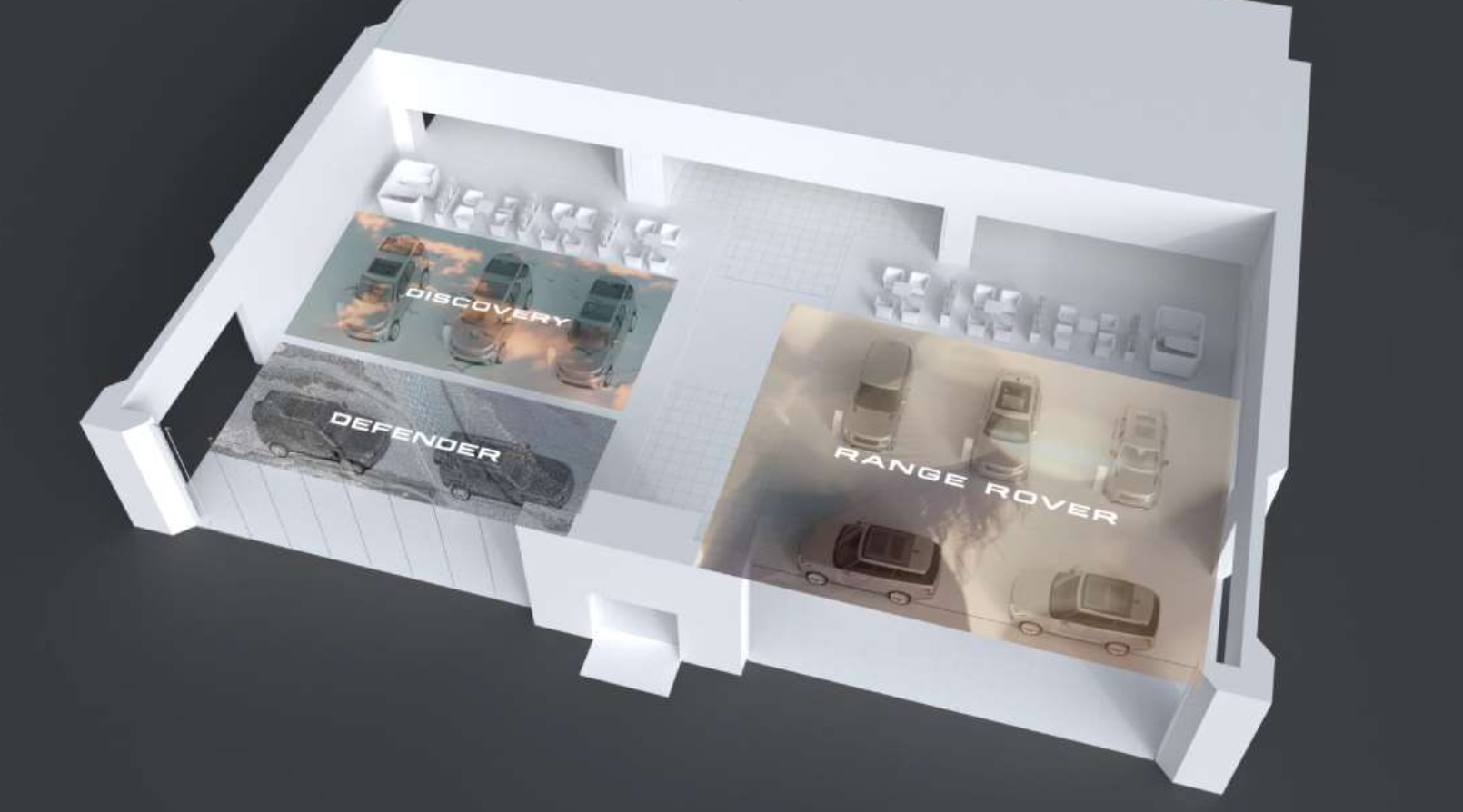Jaguar Land Rover’s planned move to a ‘House of Brands’ has been met with a mixed reaction from industry experts.
In an investigation by Car Dealer Magazine, some industry commentators welcomed the move while others cautioned it could cause ‘confusion’.
The British manufacturer aims to transform its dealer network to focus on four main brands – Range Rover, Defender, Discovery and Jaguar.
It has relegated the Land Rover name to become a ‘trust mark’ on its cars rather than the overarching brand name, plans to move to fixed price agency car sales next year and will drastically cut the number of dealerships it operates.
JLR showrooms are set to be split into four distinct sections selling the different brands – and many will lose Jaguar completely.
Car Dealer canvassed a panel of automotive industry experts for their views on the dramatic changes at JLR.
Professor David Bailey – a British academic economist at the Birmingham Business School – cautioned that the House of Brands strategy had ‘already caused confusion’.
He pointed to the fact the car maker had to clarify the fact that cars would continue to feature Land Rover badging in some form.
UK boss Patrick McGillycuddy recently told Car Dealer the Land Rover name will continue to play an important role.
Bailey said: ‘The shift to a House of Brands, by a rebranded itself JLR, raises as many questions as it answers.
‘Range Rover and Jaguar are clearly well-known brands, and the firm has claimed that Discovery and Defender are themselves “massive”.
‘That may be the case, but so is Land Rover, which really does have massive recognition around the world.
‘Apparently that won’t disappear, but this risks confusion if a car is badged as, say, a Land Rover and a Discovery.’
Felipe Munoz, global automotive analyst for Jato, agreed that it will cause confusion.
He warned that the decision to promote model names as brands while still carrying the Land Rover logo on vehicles will be hard for buyers to understand.
Munoz told Car Dealer: ‘The more independence they can give for the models within the Land Rover brand, the more it can help for communication and marketing reasons.
‘However, it will be confusing as all the vehicles will still have the Land Rover logo. They talk about four different brands, but at the end of the day we will continue to see two different logos.
‘It is a bit confusing, to be honest.’
Munoz also raised concerns over the strength of the Discovery brand within the quartet being highlighted.
‘They are giving more visibility to the two products that work well – Range Rover and Defender – but at the same time, they are leaving the Discovery family, the weak side of Land Rover, more exposed.
‘They can reposition the logos, brands and communication, but as long as there are not more competitive products, it is hard to revive the interest from the public.’
- Land Rover name is not dead – despite being relegated
- JLR will cut dealerships as it moves away from volume sales
- All Jaguar Land Rover new car sales will be fixed price and no haggle from 2024
This view was echoed by Steve Huntingford, editor of car-buying publication What Car?
He said: ‘From a branding point of view, perhaps the biggest question mark is over Discovery.
‘Jaguar, Defender and Range Rover models all have distinct identities, whereas the Discovery “brand” currently has fewer characteristics that make it stand out.’
Huntingford also raised concerns over how Jaguar’s drive upmarket – with a four-door grand tourer expected to start from well over £100,000 – could be fulfilled.
‘Jaguar’s move upmarket will also need careful planning and execution if buyers are to accept it, because they’re used to the brand competing in a different sector of the market,’ he said.
‘Everything about the ownership experience will need to scream luxury – just trimming the cars with a bit more leather won’t be enough.’
- JLR: We must fix our reliability if we’re to make brands a success
- Jaguar dealership cull begins as Vertu books £1.5m charge for loss of five sites
Bailey also highlighted a belief that Land Rover should be aiming to capitalise on its core brand values and rugged brand image in other ways, including investing in expanding its footprint into other profitable areas of the market.
He added: ‘The firm is actually missing a huge trick in not developing Land Rover as, for example, a pick-up brand.
‘This could be highly profitable in certain markets like the US, yet bizarrely the firm still offers no pick-up model at all.’
Too early to judge
However, other experts Car Dealer spoke to thought the move would be a positive step.
Philip Nothard, insight and strategy director at Cox Automotive, said the car manufacturer had no other option than to ‘radically overhaul itself in order to survive and thrive into the era of electrification’.
He believes people shouldn’t judge the transformation until it is complete.
He said: ‘It’s important we remember this “House of Brands” concept is just one component of a huge strategic shift for JLR.
‘The group’s product has evolved and will continue to do so, and this sets the scene for Jaguar’s long-awaited rebirth and the continuing evolution of the products formerly known as Land Rover into luxury brands in their own right.
‘What’s for certain is that standing still is not an option in today’s automotive market, and JLR understands this perhaps better than anyone.’

The new JLR dealership concept
Nothard also defended the decision to kickstart public awareness of the transition ahead of many of the new products.
The brand says it will ‘reimagine’ Jaguar as an electric brand, as well as launch electric versions of the Range Rover, Range Rover Sport, Discovery and Defender.
The first of these models are expected to be teased this year, shown in 2024 and launched in 2025.
‘Could this transition turning models into brands in their own right happen without this change?’ asked Nothard.
‘Probably not in reality. But there must be the substance behind the aesthetic.’
A car dealership group MD who spoke to Car Dealer on condition of anonymity predicted that JLR’s strategy would play out well in the long term, so long as it sticks to its core purpose of allowing models to shine in their own right.
‘It’s a bold move to jettison the renowned Land Rover brand from the new JLR strategy, and it’s true that swapping heritage for modernity will either turn out to be a risk too far or massively visionary,’ they said.
‘But I believe that what often appears radical in the first instance appears less so over time.
‘For me, it’s akin to Apple – it’s a “loved” brand, but their core products, iPhone, iMac, iPad, etc, are “brands” themselves and the company has discreet marketing and promotion for the “product brands” rather than Apple as a whole.
‘A reimagining allows for innovation, or brand stretch, whereas a long-standing brand struggles to truly innovate without alienating its core consumers.
‘One thing is clear – in the future, a younger, more savvy customer is required for every car manufacturer to be successful, and perhaps ditching a legacy brand position is the way to attract a new audience.’
A spokesperson for Jaguar Land Rover said: ‘We have chosen a “House of Brands” organisation to amplify the unique DNA of each of JLR’s brands and accelerate the delivery of the company’s vision to be “proud creators of modern luxury”.
‘By taking this approach we will grow each brand’s individuality, desirability, and appeal in a way that meets the unique needs of our global client base.
‘Range Rover, Discovery and Defender will continue to have the trust mark of Land Rover, while Jaguar is being reimagined entirely as an all-electric modern luxury brand from 2025.’



































